Fence
What Is Fence?
A fence is an enclosed border structure that is normally built outside. These are constructed by driving posts into the ground, and they are connected by rails, netting, boards, or wire. The wall boundary, which is a solid structure, is entirely different from this. Fences, on the other hand, lack the sturdy construction visible from the interior of the wall of the fence.
What Are Fencing Posts?
A fence post, also known as a fencing post, is a vertical component composed of different materials, such as wood, concrete, steel, iron, etc., that supports the fence in place on the ground.
Factors for Fencing
There are a lot of folks out there who are attempting to choose the greatest fencing. The issue is that there isn’t just one correct response to that query. There are a lot of things to think about and many kinds of fencing.
Instead of asking what is the greatest fencing in general, it is crucial to adapt the fence to the specific needs of each site. Here are some things to think about, along with a table comparing various fence kinds.
- Cost
When asking what type of fencing would be appropriate for your location, your budget should be the first thing you take into account. Although price should never be the primary deciding factor, it may restrict your alternatives because fence prices vary greatly depending on the type, materials, and other factors.
Knowing your price range can help local fence providers advise you on the best fencing options when you contact them for advice.
- Objective
The purpose of the fence is a crucial consideration when choosing the appropriate fencing for your project.
For instance, you would select a different style of fence than if you wanted to keep animals in or out if you needed to build pool fencing. The next crucial step in selecting the ideal fence for your location is defining what you need the fence to accomplish.
- Safety
Although not all fences are built to provide security, your options will be constrained if you require one. If you want extra protection for your site, you might need to choose a different sort of fence because certain types aren’t as secure as others.
- Aesthetics
When you are fencing business premises or public areas, the appearance of the fence may occasionally take precedence. Again, the type of fence that would work for you would depend on how attractive you need your fence to be. There are certain fences that look better than others.
- Regarding
A lot of people who are trying to decide what kind of fencing is appropriate for their backyard or other private spaces may be seeking for fencing that not only marks a boundary but also provides privacy.
Before you start looking for a fence, it’s crucial to decide how much privacy you need because the quantity of seclusion a fence offers varies greatly from one type to another.
- Maintenance
The optimal fencing for your project will depend in large part on maintenance. Some fences, like chain link and plastic fences, don’t need any upkeep at all. Others, like wooden fences, may require routine cleaning or staining to maintain their good looks. Before you begin looking for the best fencing solutions, decide how much time, money, and effort you are willing to invest into maintaining your fence.
- Resistance to weather and climate
The appropriate type of fencing for your project may occasionally depend on the local environment and weather conditions where you’re putting the fence. For example, you’ll need a fence type that is extremely corrosion-resistant if you reside near the water. But if you live in a region with a lot of rain, you can discover that the water causes the wood in your fence to decay or turn green.
What Kinds of Fencing are Available for Homes?
Perhaps a different kind of fence is present in your ideal house and lifestyle. That fence could be made of wood, aluminum, or even a high-tensile fence for goats. It’s a good idea to be aware of the fencing options accessible to you and what will suit your taste if you intend to live in a house with a yard.
Similar to roofing and window styles, different homes will benefit from different types of fencing depending on the location, climate, architectural house style, outdoor living plans, and other considerations.
Both the function and the aesthetics of a fence should be considered. The oldest fence, which was constructed in the 18th century, is one example of a fence that endures longer than one may anticipate. Even if it doesn’t have to, your fence should ideally hold up for at least 20 years.
Choosing the appropriate fence for your needs might be challenging with the variety of fences on the market. We’ve produced a list of some of the greatest fence solutions to aid you in making your choice.
Best Fencing Styles
Wooden Fence
We’ll start with the most fundamental kind of fence, which, depending on the type of wood, the spending limit, and the design, can nevertheless be elegant and timeless.
Wooden fencing is graded as clear, premium, select, standard, and quality, in that order.
- In general, cedar, redwood, fir, cypress, spruce, and pine are great choices.
- A wood fence can give your house a feeling of coziness and warmth.
- The height, length, and quality of the wood, as well as the thickness of the employed boards, will all affect the price of a wood fence.
- There are various types of wood fences, including panels, lattice, posts, pickets, and logs.
- Choosing a wood species that can tolerate the local weather changes is crucial. Additionally, it should ideally be weatherproof and termite-resistant.
- Wood fences can either be painted or naturally colored.
- It should be noted that wood is not fire resistant and may not be stable during temperature fluctuations because it will contract and expand.
- You could need expert help to increase its durability and make sure the screwing is done correctly.
Brick-Wall Fence
You may have security, privacy, and style with a brick wall fence. These fencing styles are common and may be seen encircling many businesses, residences, educational facilities, and other structures.
Brick walls can be paired with iron fencing, barbed wire, etc.
A brick boundary wall can be expensive to construct, is weather and fire resistant, and typically ranges in width from 9 to 12 inches. Your area of land use will therefore be less. In areas with already limited space, such metropolitan areas, this is a crucial consideration.
PVC Fencing
Vinyl fencing is made of plastic, is simple to clean, and is available in a number of neutral finishes.
- Resilient and easy to maintain.
- Effective for pool, farm, and garden fence. can also be utilized to provide decoration and provide security.
- Accessible kits and pre-assembled panels are also readily available.
- Does not call for painting or staining.
Link Chain Fence
Chain link fencing is a good choice if price is an issue. Galvanized steel links are twisted together to form the structure, which is attached to mild steel, concrete, or galvanized iron poles.
- Due to its affordability and ease of maintenance, chain link fencing is frequently employed on construction sites and in commercial structures.
- You may add latches, gates, and posts.
- Simple and quick installation.
- It can be coated or galvanized to increase corrosion resistance.
- Prevents stray animals from entering.
- Fence slats can be installed to increase privacy and reduce noise, wind, and dust.
- Since it isn’t the most aesthetically pleasing sort of fencing, it is preferable if it is hidden from view from your home.
- Lacks seclusion, in contrast to wooden, brick, or vinyl fencing. Slats, nets, and plants, on the other hand, can be added for privacy.
- A lower lifespan than stone or brick, but one that is longer than barbed wire fencing.
The lack of security is the main disadvantage. The majority of residential chain link fencing is merely 4 to 5 feet high, making them simple to scale.
Iron Fence
Iron fencing is your golden armor if you seek security, toughness, and style. Your home will look particularly lovely and historic if it is made of wrought iron. At the top, you can even include original patterns and components.
Iron fencing is sturdy and often damage-resistant. when exposed to moisture, won’t decay or distort.
Iron is malleable, which allows for a high degree of personalization. Iron is heavy, which makes installation more time-consuming and labor-intensive than with other forms of fencing. Iron is also susceptible to rust and corrosion.
Every 1 to 3 years, it needs to be painted and undergoes routine maintenance. The cost of this fencing is high, and it frequently needs to be made to order. It also needs to be sanded for corrosion. In hilly or graded yards, it may have a limited application. Although a gentle slope can be controlled, steep slopes might need to be customized.
Boulder Fence
In mountainous or plateau areas where stones are readily available, a boulder fence, also known as a boulder wall, is one of the most popular styles of fencing.
- A boulder wall will give your house a rustic, natural appearance.
- Low maintenance requirements.
- Time-consuming to construct;
- Skilled artisans may be needed for an artistically beautiful arrangement.
- Strong, long-lasting, and offers plenty of privacy. If you want to raise the value of your property, this is crucial.
Benefits and Drawbacks of Chain Link Fencing
It doesn’t matter what you call it—chain link fencing, diamond mesh fencing, or something else—chain link mesh fencing is undoubtedly one of the most widely used fence types worldwide.
However, there are advantages and disadvantages to choosing a chain link fence or diamond mesh fence for your project, just like with any other form of fence. Let’s examine both.
Chain Link Fence Advantages
Choosing a chain link fence or diamond mesh fence for your project has several benefits. Let’s start with those. These consist of:
Easily accessible
In almost every nation, it is simple to find chain link fence systems, and most major cities will have at least a few vendors of chain link mesh and other fence parts. This saves money and time on delivery, which is great for most fence jobs!
Simple to Install
Installing chain link fences, often known as diamond mesh fencing in some regions of the world, is not too difficult. Large perimeter fences require expert workers to erect, although the fence system itself can be used on sloped and undulating ground more easily than rigid fence systems.
Numerous Variations
Chain link fence systems come in a wide range of types. Therefore, you may create a specification that works for your project, whether you only need a 4′ high chain link fence around a vegetable garden or you want a 3.6m high diamond mesh fence with barbed wire and razor coils.
Multiple Finishes
There are many different types of finishes and colors for chain link and diamond mesh fencing. So, if you live in a warmer climate, you may choose a green fence that fits in with the greenery, or if you live in a snowy place, you can choose white or black – all of which look wonderful against the snow!
Easy to maintain
When installed properly, diamond mesh fencing and chain link fence systems require relatively little upkeep. It should provide you with twenty-five years or more of rust-free service if properly galvanized and situated away from the coast or close to an industrial setting.
Effective from a financial standpoint
Chain link fence systems and diamond mesh fencing have a lot of benefits, but one of the main benefits is how affordable they are. Compared to more intricate fence systems, the labor costs for installation are reduced and the materials itself are reasonably priced.
Disadvantages Of Chain-Link Fencing
Chain link fencing is no exception; every fence type has advantages and disadvantages. Choosing chain link fence or diamond mesh fencing for your project has a few disadvantages, which are listed below.
Issues with Corrosion
The fence will endure a very long time with just galvanizing or galvanizing and powder or PVC coating if you place a chain link fence far from the ocean and away from industrial chemical environments.
However, you might have to choose an aluminum chain link fence or even grade 304 or 316 stainless steel diamond mesh fencing if you have to put your fence in a corrosive environment. Both of these options would dramatically raise the cost of your fence.
Reduced Security
For a number of reasons, chain link fences are not typically thought of as high security fences. The woven fence fabric is simple to “unweave,” for one thing, and the bottom of the fence can be removed to allow access, too.
Chain link fences can be made more secure by adding fence detecting systems, burying a portion of the bottom, and adding barbed wire and razor wire atop the fence, however doing so will raise the price of the fence as a whole.
Design Problems
Despite being affordable and adaptable (both literally and figuratively), chain link fences and diamond mesh fencing aren’t the most attractive fences available. Large sites are frequently fenced with something else at the portions of the fence that are visible to the public, and cheaper mesh fences are employed on the remaining portions.
The aesthetic of a chain link fence can also be improved by some improvements, such as privacy slats or even fake plants.
Inadequate Privacy
Unsurprisingly, chain link fencing is made of woven fence mesh, which consists of wires with wide gaps between them. As a result, a chain link fence by itself essentially provides no privacy. There are, however, a number of workarounds for this.
As was already noted, some people go with fake plants, while others choose various styles of privacy slats. Others employ lattice or reed screens to offer seclusion to their fences, or they plant climbing plants along the fence’s edge.
A chain link fence can be made more private in a variety of ways, but doing so will raise the price of the fence.
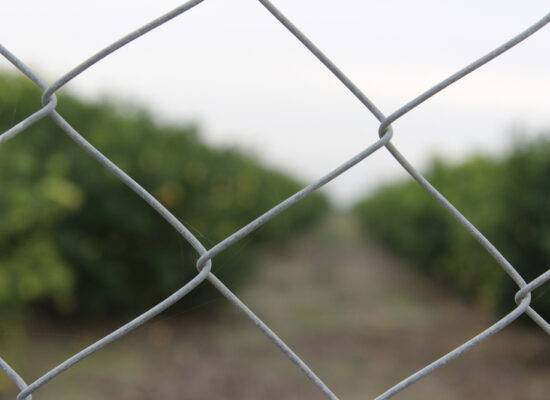
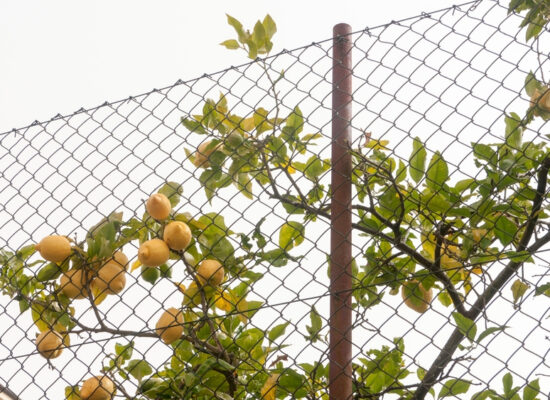
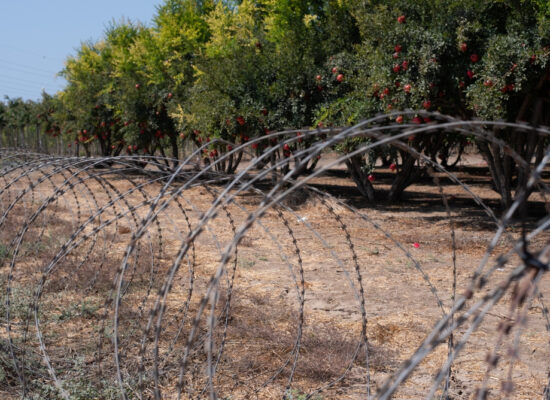
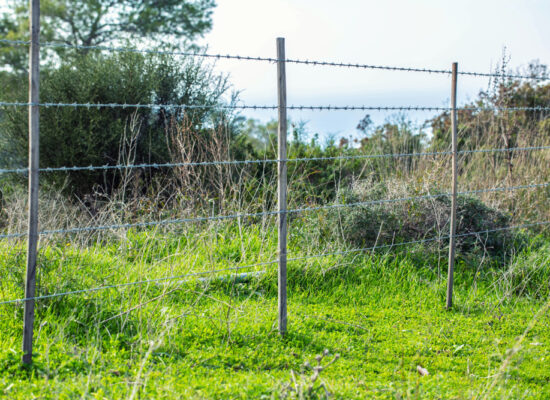
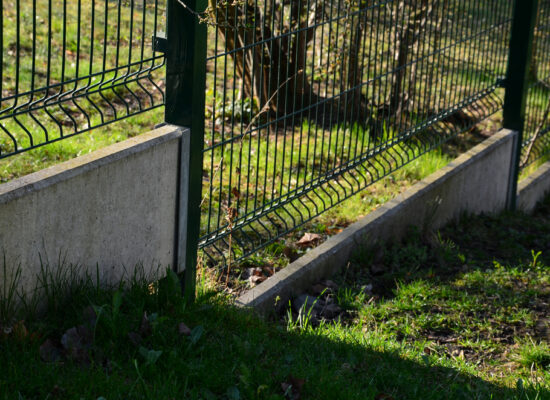
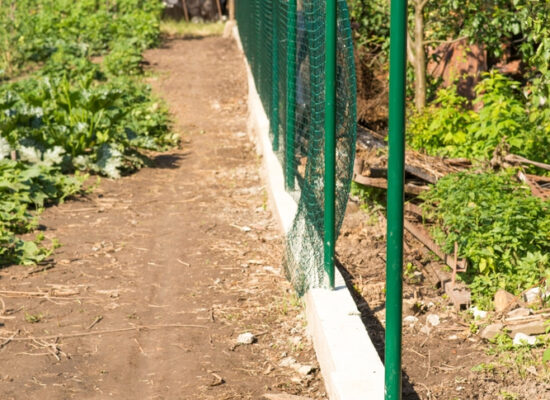
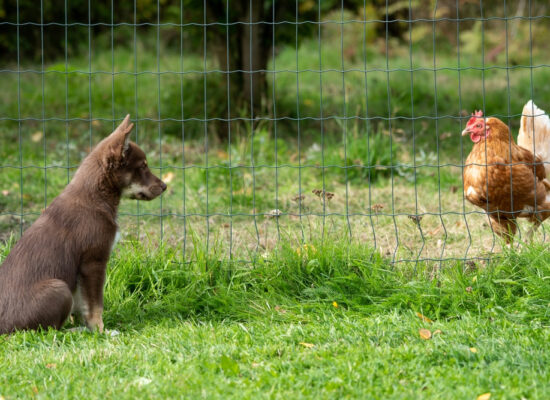
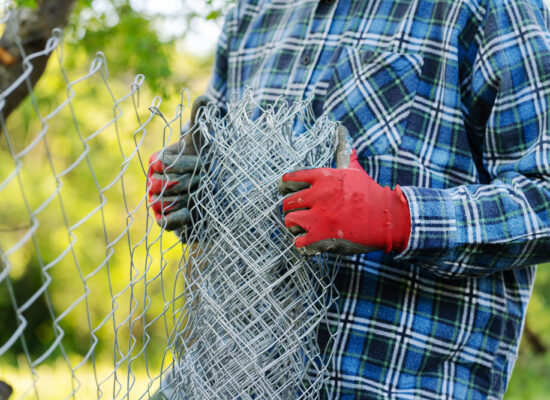
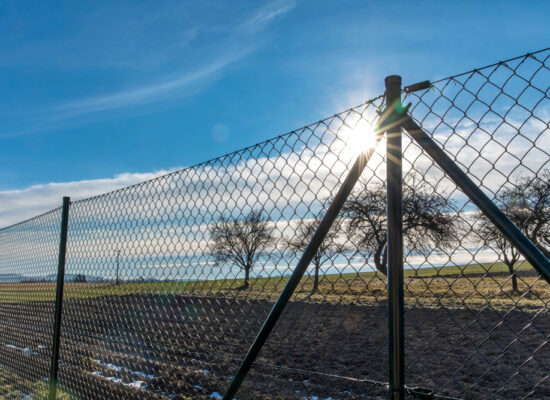
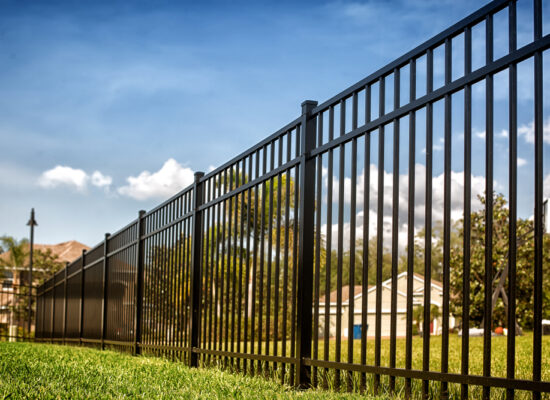
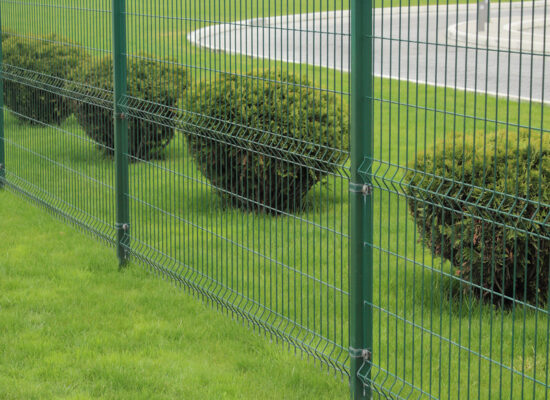
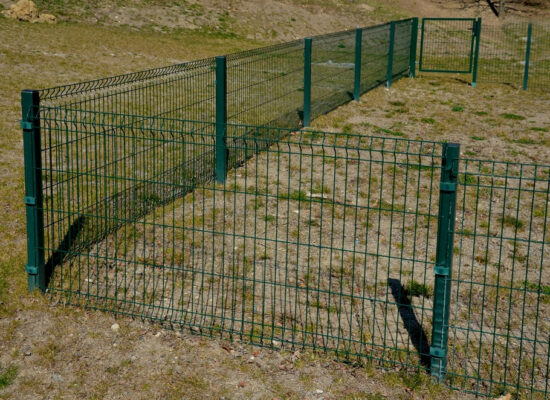
© Arbemu. All rights reserved